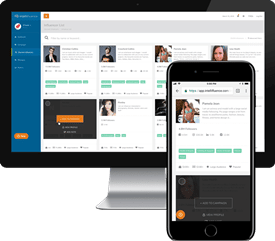In the rapidly evolving landscape of digital marketing, influencer marketing has emerged as a powerful strategy for brands aiming to expand their reach, enhance engagement, and drive business results. To harness the full potential of influencer marketing, setting clear and measurable objectives is crucial. This article explores how to create effective influencer marketing objectives, with practical examples and strategies for choosing the right goals based on a brand’s specific needs.
Understanding Influencer Marketing Objectives
Marketing objectives are the foundational goals that guide a campaign, shaping its direction and determining its success metrics. These objectives should align with the broader marketing goals of the brand and be specific, measurable, attainable, relevant, and time-bound (SMART).
A Common List Of Marketing Objectives:
- Building Brand Awareness: Increasing the visibility of your brand to a broader audience.
- Establishing Trust and Loyalty: Strengthening relationships with consumers through credible and authentic endorsements.
- Driving Sales: Boosting immediate sales or conversions directly through influencer endorsements.
- Fostering a Brand Community: Creating an engaged community around a brand that facilitates interaction and loyalty.
When signing up for the Intellifluence platform using the free, starter, or regular plan, brands will handle their marketing objectives on their own. However, by signing up for the Advanced Plan, brands will receive assistance from the Intellifluence admin to help them achieve their influencer marketing goals. If building awareness across various social media platforms is on your list of marketing objectives the Intellifluence team is happy to assist you in meeting your goals.
How to Set Influencer Marketing Objectives
Creating marketing objectives requires a clear understanding of your brand’s current market position, target audience, and long-term goals. Here’s how to approach this task:
-
- Assess Your Brand’s Needs: Begin by conducting a thorough assessment of your brand’s strengths, weaknesses, opportunities, and threats (SWOT analysis). This will help identify areas where influencers can add the most value, such as addressing a lack of awareness in new markets or improving brand perception among certain demographics.
- Define Specific Goals: Based on your assessment, define specific goals that you want to achieve through influencer marketing. For example, if your brand is launching a new product, your goal could be to create buzz and educate potential customers about the product features.
- Make Objectives Measurable: To track the success of your influencer campaigns, set measurable objectives. For instance, if your goal is to build brand awareness, you might measure the increase in your social media following or the reach and engagement rates of your influencer posts.
- Ensure Alignment with Broader Marketing Strategies: Influencer marketing should not operate in isolation. Ensure that your objectives align with your overall marketing strategy and business goals. This integration ensures that all marketing efforts complement each other and drive towards the same end goals.

Featured Influencer: Bradley Vinson
I work with brands to build awareness with new audiences as well as enhancing their existing communities with the skills to be more informed users. Currently, I work as an affiliate, content contributor/creator, and brand ambassador for brands like eCamm Live, Restream Studio, TubeBuddy, Easil, StreamYard, Tharasio, Vont, GreatCircle US, and others.
Examples of Influencer Marketing Aspirations
Building Brand Awareness: A beauty brand launching a new skincare line might partner with beauty influencers to create tutorials and reviews showcasing the benefits and results of the products. The objective would be to maximize reach and introduce the brand to potential customers who trust the opinions of these influencers.
Establishing Trust and Loyalty: A brand known for outdoor gear could collaborate with influencers who genuinely use and advocate for their products in real-life scenarios, such as camping or hiking. These authentic endorsements help build consumer trust and loyalty, showing that the brand is favored by credible experts.
Driving Sales: To directly drive sales, a fashion retailer might use influencer promo codes and affiliate links that provide both the influencer and their followers a discount on purchases. This strategy not only incentivizes purchases but also allows for easy tracking of sales generated from the influencer campaign.
Fostering a Brand Community: A gaming company might work with influencers to host live-stream events, online tournaments, or community discussions. These activities help foster a strong community of engaged users who feel connected to both the brand and each other through shared interests.
Choosing the Right Influencer Marketing Goals
Selecting the right goals requires a deep understanding of your audience’s preferences and behaviors. Consider the following steps:
- Audience Research: Analyze your target audience’s demographics, online behavior, and preferences. Understanding what resonates with your audience will guide you in setting objectives that are most likely to engage them.
- Influencer Alignment: Choose influencers who align with your brand values and have a genuine connection with their audience. The authenticity of the influencer’s content plays a crucial role in the effectiveness of the campaign.
- Pilot Testing: Consider running pilot campaigns with different objectives and measuring outcomes. This experimental approach can reveal what works best for your brand before scaling up efforts.
- Continuous Learning and Adjustment: Influencer marketing is dynamic, and what works today might not work tomorrow. Continuously monitor the performance of your campaigns and be ready to adjust your strategies based on new insights and market trends.
Setting clear, strategic objectives is the cornerstone of successful influencer marketing. By carefully defining and measuring these goals, brands can effectively leverage influencers to achieve significant marketing wins—from enhancing brand visibility and building customer trust to driving sales and creating vibrant brand communities. As the digital landscape evolves, so too should your approach to influencer marketing, always aiming to stay relevant, authentic, and aligned with your audience’s needs.

SallyBot is committed to helping users get the most out of Intellifluence. By helping brands create campaigns, providing unparalleled customer service and offering useful advice, nothing makes SallyBot happier than hearing she is liked… Really, really liked.






